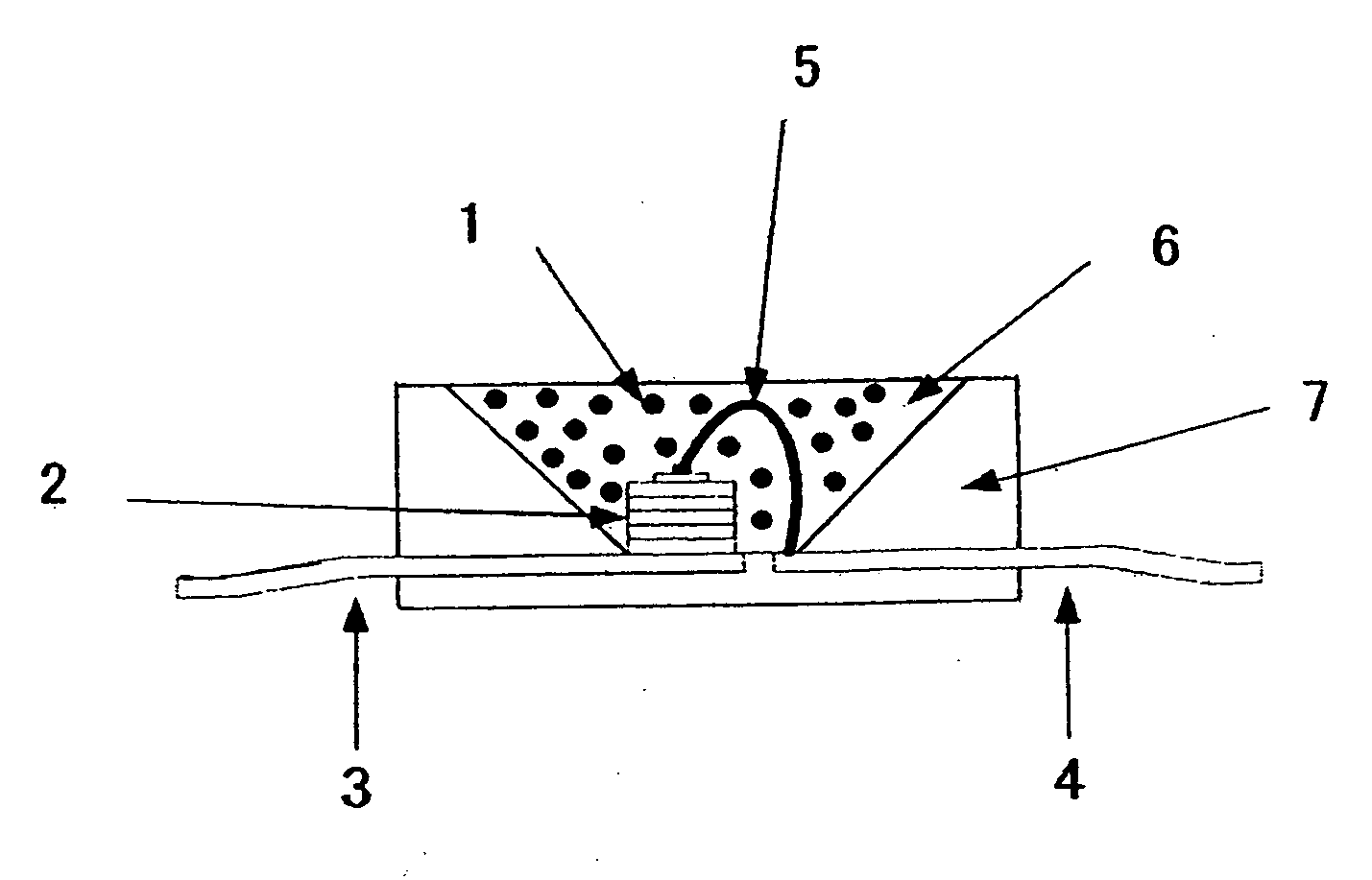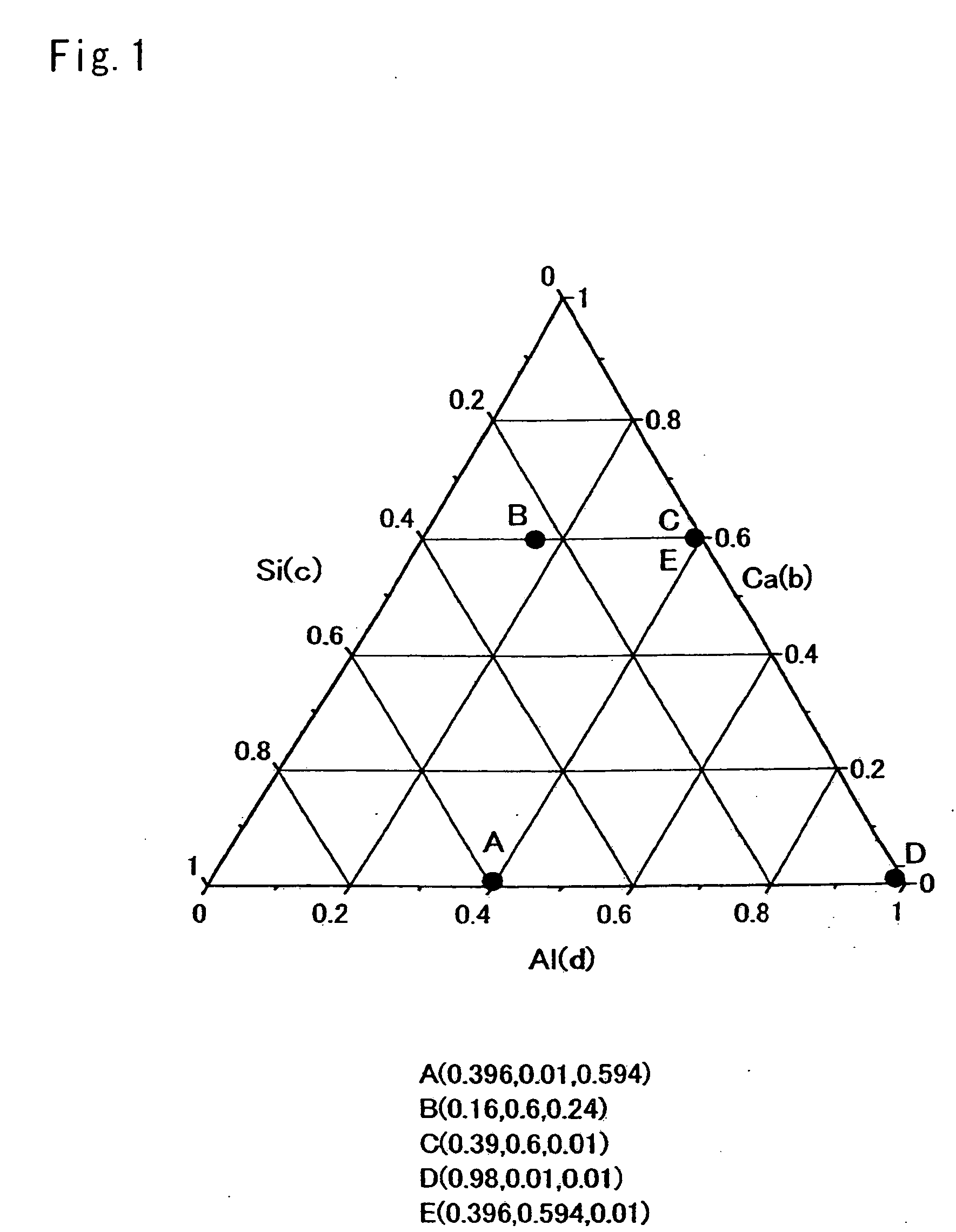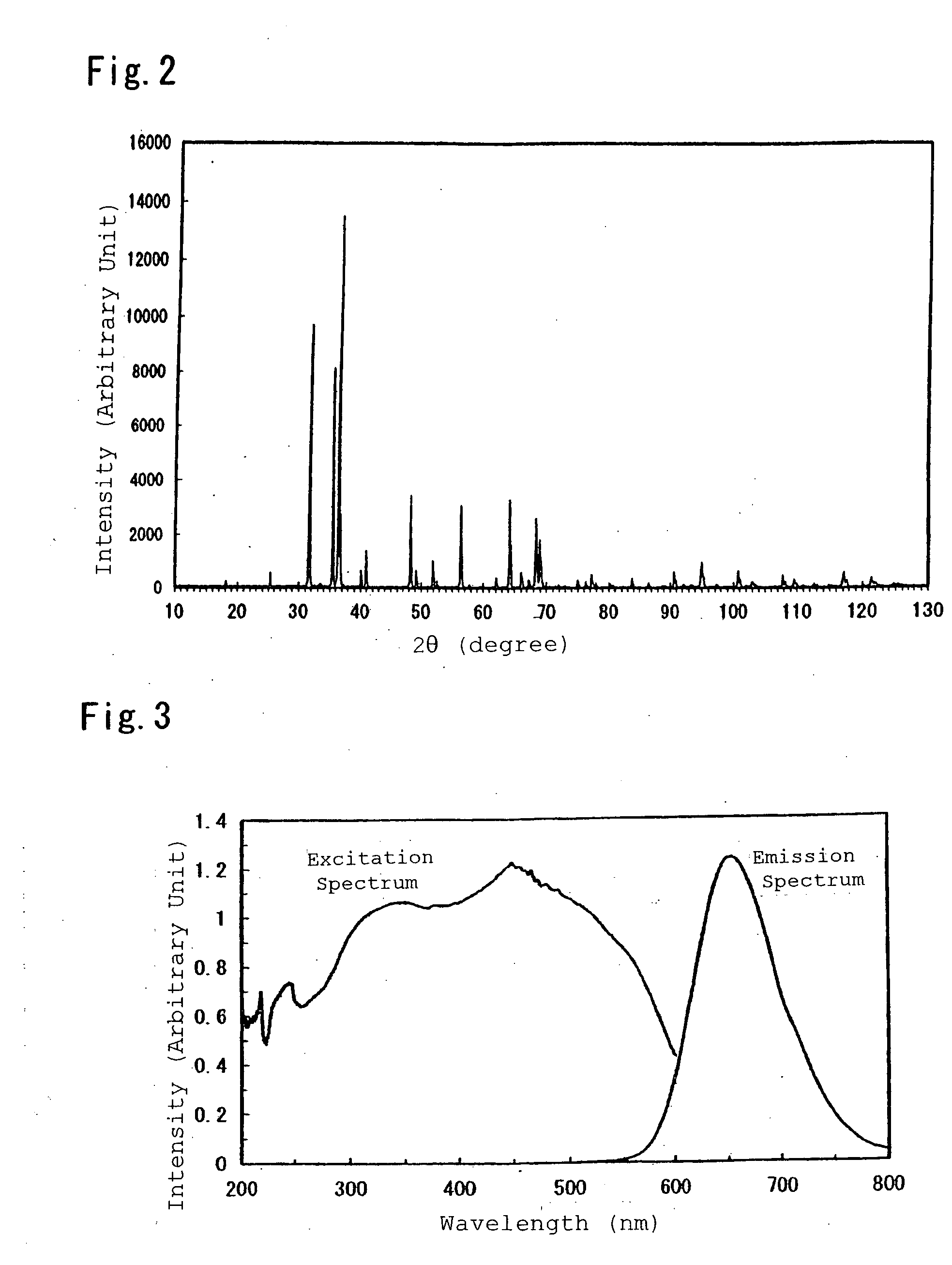Phosphor and Light Emitting Instrument
a technology of phosphor and light emitting instrument, which is applied in the field of phosphor, can solve the problems of chemical instability, deviation in color rendering property, and durability of phosphors, and achieve the effect of not affecting luminance deterioration
- Summary
- Abstract
- Description
- Claims
- Application Information
AI Technical Summary
Benefits of technology
Problems solved by technology
Method used
Image
Examples
example 1
[0178]Used for preparation of a starting material powder were: a silicon nitride powder having an averaged particle size of 0.5 μm, an oxygen content of 0.93 wt %, and an α-type content of 92%; an aluminum nitride powder having a specific surface area of 3.3 m2 / g, and an oxygen content of 0.79%; a calcium nitride powder; and europium nitride synthesized by nitriding metal europium in ammonia.
[0179]Composition Formula:
[0180]To obtain a compound represented by a composition formula Eu0.002674Ca0.331551Al0.334225Si0.334225N1.002674 (Table 1 shows parameters of a designed composition, and Table 2 shows a mixture composition of starting material powders), there were weighed 33.858 wt %, 29.681 wt %, 35.499 wt %, and 0.961 wt % of a silicon nitride powder, an aluminum nitride powder, a calcium nitride powder, and a europium nitride powder; the powders were then mutually mixed for 30 minutes by an agate pestle and an agate mortar, and thereafter, the obtained mixture was naturally dropped ...
example 2
[0190]Used as starting materials were the same aluminum nitride powder, the same calcium nitride powder, and the same europium nitride synthesized by nitriding metal europium in ammonia, as Example 1.
[0191]Composition Formula:
[0192]To obtain a compound represented by a composition formula Eu0.001993Ca0.182642Al0.628737Si0.182642N1.003986 (Table 1 shows parameters of a designed composition, and Table 2 shows a mixture composition of starting material powders), there were weighed 20.068 wt %, 58.641 wt %, 20.54 wt %, and 0.75 wt % of a silicon nitride powder; an aluminum nitride powder, a calcium nitride powder, and a europium nitride powder; to synthesize an inorganic compound by the same process as Example 1.
[0193]Next, the synthesized compound was pulverized by an agate mortar, and there was conducted a powder X-ray diffraction measurement by Kα line of Cu. The resultingly obtained chart is shown in FIG. 4, and phases other than a mixture of CaAlSiN3 crystal and AlN crystal were no...
examples 3 to 43
[0196]Inorganic compounds were prepared by the same procedure as Example 1, except for compositions listed in Table 1 and Table 2. The synthesized inorganic compounds were measured for excitation spectra and emission spectra, thereby showing that the inorganic compounds were red-aimed phosphors which were excited by ultraviolet light or visible light at 350 nm to 600 nm and had emission peaks in a range of 570 nm to 700 nm as shown in Table 3, respectively.
[0197]There will be now explained lighting instruments each adopting the phosphor comprising the nitride of the present invention. FIG. 6 is a schematic view of a structure of a white LED as a lighting instrument. The lighting instrument adopts a blue LED 2 of 450 nm as a light emitting element, and has a structure that the blue LED 2 is covered by a resin layer including, dispersed therein, the phosphor of Example 1 of the present invention, and a yellow-aimed phosphor of Ca-α-sialon:Eu having a composition of Ca0.75Eu0.25Si8.625...
PUM
| Property | Measurement | Unit |
|---|---|---|
| Mass | aaaaa | aaaaa |
| Particle size | aaaaa | aaaaa |
| Particle size | aaaaa | aaaaa |
Abstract
Description
Claims
Application Information
 Login to View More
Login to View More - R&D
- Intellectual Property
- Life Sciences
- Materials
- Tech Scout
- Unparalleled Data Quality
- Higher Quality Content
- 60% Fewer Hallucinations
Browse by: Latest US Patents, China's latest patents, Technical Efficacy Thesaurus, Application Domain, Technology Topic, Popular Technical Reports.
© 2025 PatSnap. All rights reserved.Legal|Privacy policy|Modern Slavery Act Transparency Statement|Sitemap|About US| Contact US: help@patsnap.com



